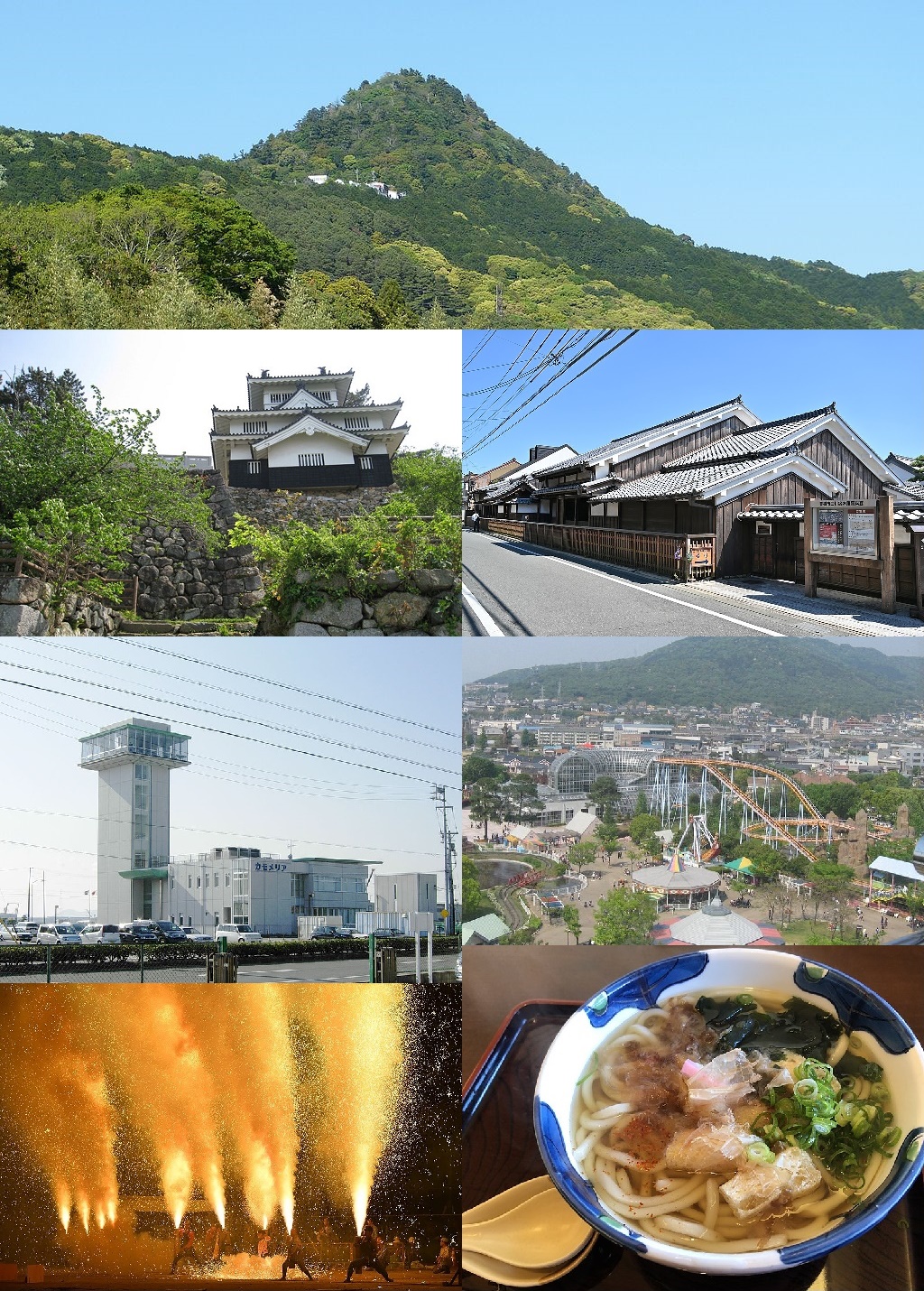|
Toyohashi Railroad Azumada Main Line
Azumada Main Line is a tram line in Toyohashi, Aichi Prefecture, Japan operated by Toyohashi Railroad. It connects Ekimae (situated in front of the JR and Meitetsu Toyohashi Station) to Akaiwaguchi and Ihara (one stop from Akaiwaguchi) to Undoukoen-mae. The line is referred to as ''Toyo-Tetsu Shinaisen'' by Toyohashi Railroad. The railroad also operated another tram line, the Yagyu-bashi Branch Line, prior to 1976. Overview The entire line is a street running tram line and is often called the ''Shinaisen'' or the ''shiden'' (both meaning city tram). Although some sections ceased operations during the 1970s much like many other tram lines in the era, a new branch line between Ihara and Undokoen-mae was opened in 1982. In 1998, Ekimae stop was moved to its current location, extending the line by . In 2005, a new station by the name of Ekimae-odori was created between Ekimae and Shinkawa. Since 1989, most tramcars excluding type T1000 and Mo3000 have had full-body advertisem ... [...More Info...] [...Related Items...] OR: [Wikipedia] [Google] [Baidu] |
Ekimae Station
is a tram station located in Toyohashi, Aichi, Japan in front of Toyohashi Station, the main train station of the city. Lines *Toyohashi Railroad The is a private railroad company in Japan, and a subsidiary of the Meitetsu Group. The company or its lines are commonly known as . The company operates the Atsumi Line train service on Atsumi Peninsula in Aichi Prefecture and a tram syste ... ** Azumada Main Line Adjacent stations , - !colspan=5, References Railway stations in Aichi Prefecture Railway stations in Japan opened in 1925 {{Aichi-railstation-stub ... [...More Info...] [...Related Items...] OR: [Wikipedia] [Google] [Baidu] |
Japan National Route 1
is a major highway on the island of Honshū in Japan. It connects Chūō, Tokyo in the Kantō region with the city of Osaka, Osaka Prefecture in the Kansai region, passing through the Chūbu region en route. It follows the old Tōkaidō westward from Tokyo to Kyoto, and the old Kyo Kaidō from there to Osaka. Between Tokyo and Aichi Prefecture it parallels the Tomei Expressway; from there to Mie Prefecture, the Higashi-Meihan Expressway, and from Shiga Prefecture to Osaka, the Meishin Expressway. It has a total length of . At its eastern terminus in Nihonbashi, Chūō, Tokyo, it meets National Routes 4, 6, 14, 15, 17, and 20. At its western terminus in Umeda, Kita-ku, Osaka, it links with Routes 2, 25, 26 and other highways. National Route 1 links Tokyo to the important prefectural capitals of Yokohama (Kanagawa Prefecture), Shizuoka, Nagoya (Aichi Prefecture), Otsu (Shiga Prefecture), Kyoto, and Osaka. It is the modern incarnation of the pre-modern Tōkaidō. ... [...More Info...] [...Related Items...] OR: [Wikipedia] [Google] [Baidu] |
Toyohashi Air Raid
The was a strategic bombing operation on the night of 19 June 1945 against the city of Toyohashi, Japan. The air raid was part of the Allies' aerial campaign against the Home Islands of the Empire of Japan during World War II. Background During World War II, as now, the city of Toyohashi, Aichi was an important hub in the transportation network of central Japan. Toyohashi Station is located along the Tōkaidō Main Line linking Tokyo and Osaka, and also serves as the origin of the Iida and Atsumi Lines which facilitate access to rural areas of eastern Aichi Prefecture. The city had a fairly small industrial base at the time, but it was more important for its port facilities on Mikawa Bay. In addition to these strategic civilian targets, Toyohashi hosted a number of military targets, such as a large training area for Imperial Japanese Army recruits located near Aichi University, and the headquarters of several army units, including the 18th Infantry Regiment, the 4th Caval ... [...More Info...] [...Related Items...] OR: [Wikipedia] [Google] [Baidu] |
Pedestrian Zone
Pedestrian zones (also known as auto-free zones and car-free zones, as pedestrian precincts in British English, and as pedestrian malls in the United States and Australia) are areas of a city or town reserved for pedestrian-only use and in which most or all automobile traffic is prohibited. Converting a street or an area to pedestrian-only use is called ''pedestrianisation''. Pedestrianisation usually aims to provide better accessibility and mobility for pedestrians, to enhance the amount of shopping and other business activities in the area or to improve the attractiveness of the local environment in terms of aesthetics, air pollution, noise and crashes involving motor vehicle with pedestrians. However, pedestrianisation can sometimes lead to reductions in business activity, property devaluation, and displacement of economic activity to other areas. In some cases, traffic in surrounding areas may increase, due to displacement, rather than substitution of car traffic. None ... [...More Info...] [...Related Items...] OR: [Wikipedia] [Google] [Baidu] |
Railroad Switch
A railroad switch (), turnout, or ''set ofpoints () is a mechanical installation enabling railway trains to be guided from one track to another, such as at a railway junction or where a spur or siding branches off. The most common type of switch consists of a pair of linked tapering rails, known as ''points'' (''switch rails'' or ''point blades''), lying between the diverging outer rails (the ''stock rails''). These points can be moved laterally into one of two positions to direct a train coming from the point blades toward the straight path or the diverging path. A train moving from the narrow end toward the point blades (i.e. it will be directed to one of the two paths, depending on the position of the points) is said to be executing a ''facing-point movement''. For many types of switch, a train coming from either of the converging directions will pass through the switch regardless of the position of the points, as the vehicle's wheels will force the points to move. ... [...More Info...] [...Related Items...] OR: [Wikipedia] [Google] [Baidu] |
Motive Power Depot
The motive power depot (MPD) or locomotive depot, or traction maintenance depot (TMD), is the place where locomotives are usually housed, repaired and maintained when not being used. They were originally known as "running sheds", "engine sheds" or, for short, just sheds. Facilities are provided for refuelling and replenishing water, lubricating oil and grease and, for steam engines, disposal of the ash. There are often workshops for day to day repairs and maintenance, although locomotive building and major overhauls are usually carried out in the locomotive works. (Note: In American English, the term ''depot'' is used to refer to passenger stations or goods (freight) facilities and not to vehicle maintenance facilities.) German practice The equivalent of such depots in German-speaking countries is the ''Bahnbetriebswerk'' or ''Bw'' which has similar functions, with major repairs and overhauls being carried out at ''Ausbesserungswerke''. The number of these reduced drastic ... [...More Info...] [...Related Items...] OR: [Wikipedia] [Google] [Baidu] |
Okayama Electric Tramway
The is a transportation company in Okayama City, Japan. The private company operates tram lines and bus lines. The company was founded in 1910, while their first tram line was opened in 1912. This is one of the few Japanese railway operators that maintain their original corporation names from the foundation in Meiji Period. The company or its lines are truncated as . The company is a core member of Ryōbi Group, another core member being Ryōbi Bus. From October 1, 2006, together with Ryōbi Bus and Shimotsui Dentetsu, another bus company, Okaden introduced Hareca, a smart card ticketing system. They accept PiTaPa and ICOCA as well. Tram lines With just 4.7 km in total, the tram lines are known to be one of the shortest in Japan. Lines : Higashiyama Line: Okayama-Ekimae — Yanagawa — Higashiyama : Seikibashi Line: Okayama-Ekimae — Yanagawa — Seikibashi (Officially, the section between Okayama-Ekimae and Yanagawa belongs to Higashiyama Line.) B ... [...More Info...] [...Related Items...] OR: [Wikipedia] [Google] [Baidu] |
Trademark
A trademark (also written trade mark or trade-mark) is a type of intellectual property consisting of a recognizable sign, design, or expression that identifies products or services from a particular source and distinguishes them from others. The trademark owner can be an individual, business organization, or any legal entity. A trademark may be located on a package, a label, a voucher, or on the product itself. Trademarks used to identify services are sometimes called service marks. The first legislative act concerning trademarks was passed in 1266 under the reign of Henry III of England, requiring all bakers to use a distinctive mark for the bread they sold. The first modern trademark laws emerged in the late 19th century. In France, the first comprehensive trademark system in the world was passed into law in 1857. The Trade Marks Act 1938 of the United Kingdom changed the system, permitting registration based on "intent-to-use", creating an examination based process, an ... [...More Info...] [...Related Items...] OR: [Wikipedia] [Google] [Baidu] |
Word Play
Word play or wordplay (also: play-on-words) is a literary technique and a form of wit in which words used become the main subject of the work, primarily for the purpose of intended effect or amusement. Examples of word play include puns, phonetic mix-ups such as spoonerisms, obscure words and meanings, clever rhetorical excursions, oddly formed sentences, double entendres, and telling character names (such as in the play ''The Importance of Being Earnest'', ''Ernest'' being a given name that sounds exactly like the adjective ''earnest''). Word play is quite common in oral cultures as a method of reinforcing meaning. Examples of text-based (orthography, orthographic) word play are found in languages with or without alphabet-based scripts, such as homophonic puns in Mandarin Chinese. Techniques Some techniques often used in word play include interpreting idioms literally and creating contradictions and redundancies, as in Tom Swifties: :"Hurry up and get to the back of the shi ... [...More Info...] [...Related Items...] OR: [Wikipedia] [Google] [Baidu] |
Oden
is a type of nabemono (Japanese one-pot dishes), consisting of several ingredients such as boiled eggs, daikon, konjac, and processed fishcakes stewed in a light, soy-flavored dashi broth. Oden was originally what is now commonly called ''misodengaku'' or simply ''dengaku''; konjac (''konnyaku'') or tofu was boiled and eaten with miso. Later, instead of using miso, ingredients were cooked in dashi, and oden became popular. Ingredients vary according to region and between each household. Karashi is often used as a condiment. Oden is often sold from food carts, though some izakayas and several convenience store chains also serve it, and dedicated oden restaurants exist. Many different varieties are sold, with single-ingredient dishes sometimes as cheap as 100 yen. While it is usually considered a winter food, some carts and restaurants offer oden year-round. Many of these restaurants keep their broth as a master stock, replenishing it as it simmers to let the flavor de ... [...More Info...] [...Related Items...] OR: [Wikipedia] [Google] [Baidu] |
Toyohashi Railroad's Tram "Odensha", At Hacchodori, Toyohashi, Aichi (2015-02-11)
is a city in Aichi Prefecture, Japan. , the city had an estimated population of 377,453 in 160,516 households and a population density of 1,400 persons per km2. The total area of the city was . By area, Toyohashi was Aichi Prefecture's second-largest city until March 31, 2005 when it was surpassed by the city of Toyota, which had merged with six peripheral municipalities. Geography Toyohashi is located in southeastern Aichi Prefecture, and is the capital of the informal "Higashi-Mikawa Region" of the prefecture. It is bordered by Shizuoka Prefecture to the east, and by Mikawa Bay and the headlands of the Atsumi Peninsula to the west. To the south is the Enshu Bay of the Pacific Ocean. The presence of the warm Kuroshio Current offshore gives the city a temperate climate. The in Toyohashi is a sea turtle nesting spot. Climate The city has a climate characterized by hot and humid summers, and relatively mild winters (Köppen climate classification ''Cfa''). The average annual tempe ... [...More Info...] [...Related Items...] OR: [Wikipedia] [Google] [Baidu] |




